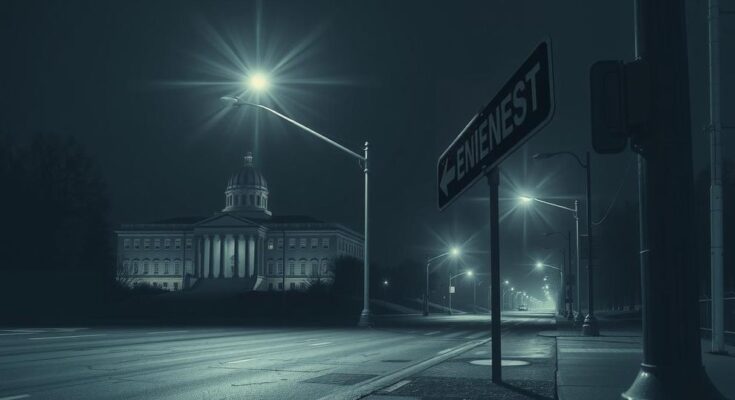Widespread protests across Iran on February 11 highlight economic hardship and governmental mismanagement, with demonstrators rallying against inflation, unpaid wages, and executions. Major protests unfolded in cities like Tehran, Bushehr, and Dehdasht, where protesters clashed with authorities. Economic turmoil continues, with the currency declining and public anger escalating, signaling deep-rooted dissatisfaction with the clerical regime.
Protests erupted on February 11 across Iran, with workers, nurses, and defrauded homebuyers voicing their grievances over economic hardships and governmental failings. Demonstrations were reported in various regions including Tehran, Bushehr, Qazvin, Gilan, Dehdasht, and outside Evin Prison. Protesters rallied against inflation, unpaid wages, and an alarming increase in executions, triggering widespread civil discontent.
In Dehdasht, demonstrators clashed with security forces, emboldened by public outrage as they attempted to seize Police Station No. 12. Protesters gathered in the city’s gold market square, chanting against oppression and calling for solidarity. Social media enhanced their message, amplifying calls such as “Don’t leave Dehdasht alone!” to a broader audience.
Tehran’s nurses at Rasoul Akram Hospital protested amid dire working conditions, chanting: “Empty promises are enough, our tables are empty!” Their frustrations mirror the worsening crisis in Iran’s healthcare sector. Families of death row prisoners gathered outside Evin Prison, demanding an end to political executions with slogans like “No to executions!” as part of the ‘No to Executions Tuesdays’ campaign.
In Bushehr, contract workers at the Fajr Jam Gas Refinery expressed discontent with chants similar to their Tehran counterparts. The oil and gas sector continues to suffer due to mismanagement and sanctions, leading to labor unrest as they face overdue wages. In Qazvin, victims of the National Housing Plan protested governmental failures to provide promised housing, emphasizing the dire housing crisis exacerbated by rampant corruption.
Further unrest was noted in Gilan, where workers at Foolad Khazar Steel Plant initiated a strike over unpaid wages and job instability. In Khash, state security forces forcibly arrested a local resident amid violent crackdowns. Reports also detailed regulatory violence against Baluch communities, following ongoing unrest in the region.
Tragic incidents like a bus crash, attributed to governmental negligence, have fueled public outrage and prompted confrontations between grieving families and officials. The protests are set against a backdrop of severe economic turmoil, with the Iranian rial experiencing historic lows and significant declines in the stock market, igniting a surge of civil discontent against the ruling clerical regime.
The recent protests in Iran reflect a widespread dissatisfaction with economic conditions, governmental mismanagement, and social injustices. Demonstrators from various sectors are uniting to voice their grievances, highlighting urgent issues such as unpaid wages, political executions, and housing crises. With civil unrest on the rise, these movements signal a critical juncture in the nation’s socio-political landscape, showcasing the populace’s demand for accountability and reform.
Original Source: www.ncr-iran.org




